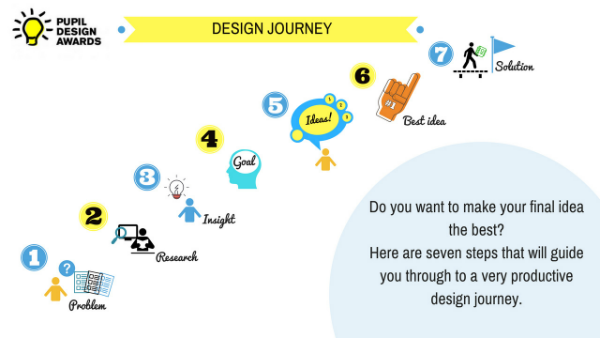Last week we launched the 2018 RSA Pupil Design Awards competition. Now in its fourth year, the competition has grown to 13 schools and is set to provide us with a range of exciting and innovative ideas from students across the country.
The RSA Pupil Design Awards is the little sister programme to the prestigious RSA Student Design Awards (SDAs), a competition that has been running for over 90 years. The array of designs that are entered to the SDAs is truly phenomenal, and we have seen many winners and participants go on to forge incredible careers in design, taking with them the social design ethos developed by the competition. The success of the SDAs inspired us to think about the place of social design in schools. The RSA Pupil Design Awards competition aims to develop students’ ability to creatively solve problems that they have identified, using insights from their peers and the world around them.

Entrants to the competition can respond to one of three briefs, all of which are written to allow students to identify a particular issue that they wish to address within the topic area, either locally, nationally or globally. The vast range of possibilities can be daunting for students, particularly younger entrants who may not have worked within such an open inquiry model before. This is where our wonderful design mentors step in to help scaffold the process.
Our design mentors are all prior winners from the SDAs and have now moved onto work in industry. They take part in two workshops with each of the schools during the competition, helping students to understand design thinking and modelling the importance of its various elements, including providing timely feedback and guidance to help students to iterate their idea. Through this targeted support we have a greater chance of producing great designs and confident designers, something that seems even more important as design in English schools is in decline.
Art and Design in English schools
At the end of January this year, we saw Will Gompertz’s call for an education element to be added to the Designs of the Year annual awards. His argument is that “we're bringing up a bunch of children who are behaving like computers, not a bunch of children who are behaving like designers” and that this is leading to a school population that struggle to apply their knowledge. While we know there are teachers across the country building time into their lesson plans for children to apply knowledge to practical problems, I believe the point he is making is still valuable when we think of the system as a whole.
In 2017 we saw a flurry of statistics showing a significant decline in the number of KS4 entries to art and design and design and technology subjects. Critics of the English Baccalaureate (Ebacc), the government’s measure to ensure children study five compulsory subjects – English, maths, science, a modern foreign language, and either geography or history – point towards this as one cause of the decline.
My colleague Julian Astle paints a very stark picture of the diverse effects the current accountability system has on education in English schools. He suggests that many headteachers are doing what they can to keep the schools operational, in an environment where they are held accountable for success indicators that are defined by a very narrow range of parameters. Is it any wonder school leaders have responded to the pressures by concentrating on that which is measured (English, Maths, Science etc) rather than that which is not (Design and Technology, Art, Music etc)? The effects of this accountability framework and narrowing of the curriculum on creative subjects was recently described in detail through the results of recent BBC research carried out into the squeezing of arts subjects in schools, where “nine in every 10 said they had cut back on lesson time, staff or facilities in at least one creative arts subject.”
Describing (albeit very briefly) the macro-environment within which the RSA Pupil Design Awards is situated feels important. This is because it stands alongside a number of other projects we are running in the RSA education team that look to promote an education that meets the needs of the ‘head, hand and heart’. The RSA Pupil Design Awards aims to meet these needs by developing specific capabilities around research and idea generation (head); prototyping, iteration and communication of these ideas (hand); and the understanding of real issues faced in their communities (heart) so that the student population can see the route to positive change in the world around them.
Pupil Design Awards - an introduction from The RSA on Vimeo.
This year’s competition is poised to be our most exciting yet with some great learning taken from last year’s competition, almost double the number of schools taking part and more mentors than ever before. We hope to work with partners to drive forward the design education agenda over the coming years, seeking to bring more opportunities for young people to think like designers.
Related articles
-
How young people are shaping social change despite Covid-19 challenges
Aidan Daly
Despite the pandemic, school pupils are demonstrating creative confidence and a commitment to making their communities a better place.


Be the first to write a comment
Comments
Please login to post a comment or reply
Don't have an account? Click here to register.